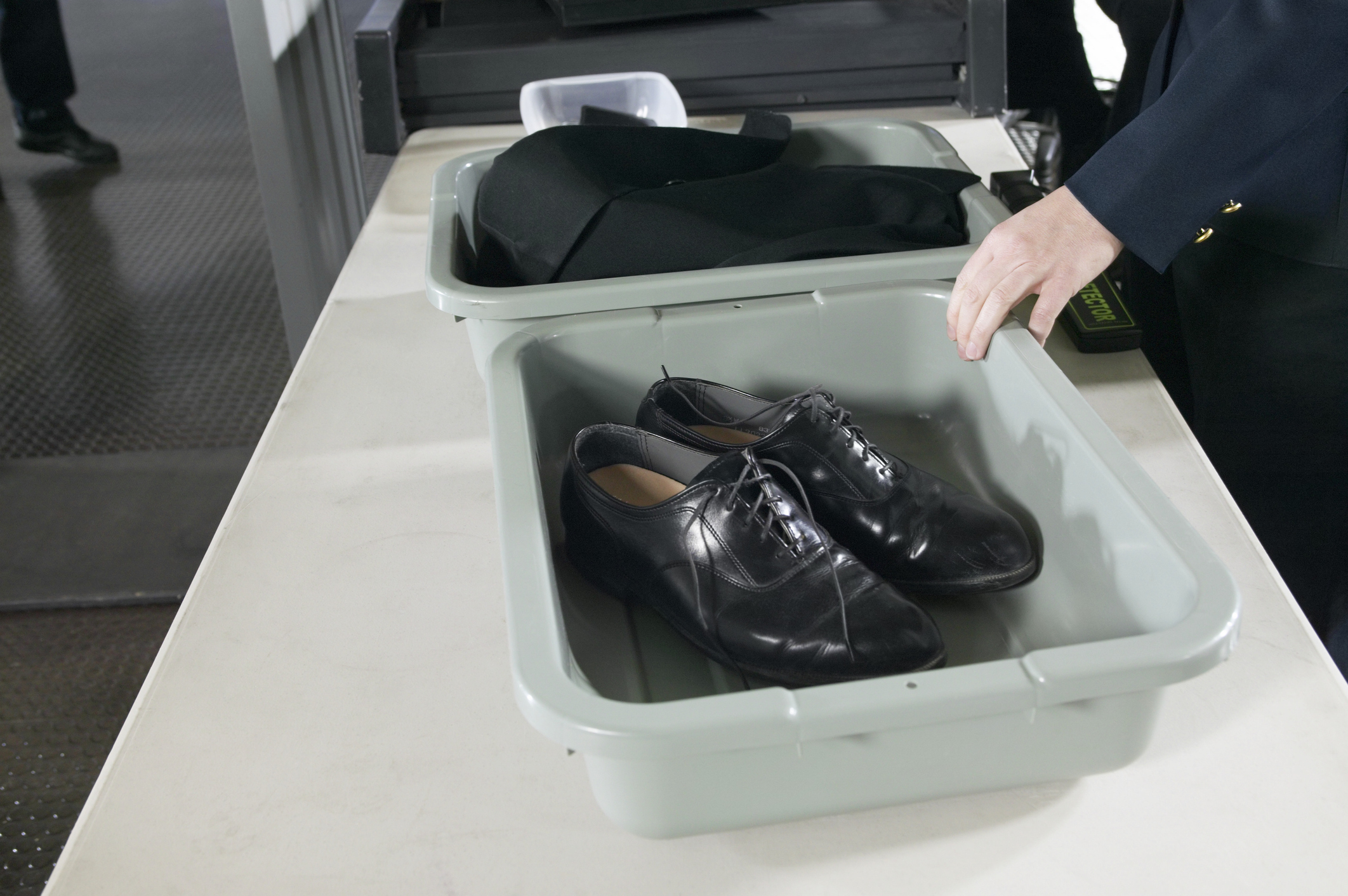The Hated TSA Shoe Removal Rule Was Finally Phased Out
After nearly 20 years, the TSA is ending its shoes-off policy. Travelers will still need a Real ID, and advanced screening remains in place. Here’s what to expect on your next flight.


For nearly two decades, travelers across the country have followed the same routine at airport security: remove your laptop, take off your belt and yes, kick off your shoes. But starting this month, you can leave those shoes right where they belong: on your feet.
The Transportation Security Administration (TSA), under direction from the Department of Homeland Security (DHS), announced that it’s ending its long-standing "shoes-off" policy at airport checkpoints. The change, effective immediately at most major U.S. airports, is part of a broader effort to modernize the passenger screening process and make air travel just a little bit less stressful.
"Ending the 'shoes-off' policy is the latest effort DHS is implementing to modernize and enhance the traveler experience across our nation's airports," said Homeland Security Secretary Kristi Noem in a press release. "We expect this change will drastically decrease passenger wait times at our TSA checkpoints, leading to a more pleasant and efficient passenger experience."

Sign up for Kiplinger’s Free E-Newsletters
Profit and prosper with the best of expert advice on investing, taxes, retirement, personal finance and more - straight to your e-mail.
Profit and prosper with the best of expert advice - straight to your e-mail.
Why the shoes-off rule is ending
If you’ve ever wondered why travelers have been required to remove their shoes at airport security, the policy dates back to 2001, when a British man known as the "shoe bomber" attempted to detonate explosives hidden in his footwear during a flight. Since then, shoe removal has become a long-standing and often frustrating part of the airport screening process.
But times, and technology, have changed. Thanks to modern imaging scanners, advanced software and a multi-layered security approach, the TSA says it no longer needs passengers to remove their shoes to ensure safety.
The agency insists that the change will not compromise security and will instead help speed up checkpoint lines, especially during busy travel seasons.
What’s changing (and what’s not) at airport security
While you can now breeze through TSA with your shoes on, other security measures are still firmly in place.
Passengers must continue to:
- Show acceptable identification (REAL ID is now required for domestic flights).
- Go through identity verification and Secure Flight passenger vetting.
- Comply with carry-on screening and liquid rules.
TSA PreCheck members will still enjoy their usual expedited benefits, and the newer "Serve with Honor, Travel with Ease" program, launched earlier this month, offers perks to military families, including PreCheck discounts and fast-lane access at select airports.
A broader shift in airport screening
This policy shift is part of a bigger push by the Trump administration to redefine the airport experience. It's being introduced alongside initiatives like expanded biometric screening and the rollout of digital ID options at select checkpoints.
In May, the TSA completed its full rollout of REAL ID enforcement at U.S. airports, which has already seen a 94% compliance rate. It’s another sign that modernizing security doesn’t have to mean adding more red tape.
A small change with big relief for travelers
After years of grumbling about the shoes-off rule, many travelers are relieved to see it retired. While the policy change may seem symbolic, it represents a larger pivot toward more streamlined air travel.
And for weary travelers just trying to make it to their gate on time, being able to skip the barefoot shuffle at security is a welcome upgrade.
Related Content
Profit and prosper with the best of Kiplinger's advice on investing, taxes, retirement, personal finance and much more. Delivered daily. Enter your email in the box and click Sign Me Up.

Choncé is a personal finance freelance writer who enjoys writing about eCommerce, savings, banking, credit cards, and insurance. Having a background in journalism, she decided to dive deep into the world of content writing in 2013 after noticing many publications transitioning to digital formats. She has more than 10 years of experience writing content and graduated from Northern Illinois University.
-
 Callable CDs Have High Rates. We Still Don't Recommend You Get Them
Callable CDs Have High Rates. We Still Don't Recommend You Get ThemInvestors must carefully consider the trade-offs, as falling interest rates could lead to reinvestment at a lower yield and make selling on the secondary market difficult.
-
 High Mortgage Rates Are Holding My Retirement Hostage: Can I Still Downsize and Retire?
High Mortgage Rates Are Holding My Retirement Hostage: Can I Still Downsize and Retire?We ask retirement wealth advisers what to do.
-
 Five Big Beautiful Bill Changes and How Wealthy Retirees Can Benefit
Five Big Beautiful Bill Changes and How Wealthy Retirees Can BenefitHere's how wealthy retirees can plan for the changes in the new tax legislation, including what it means for tax rates, the SALT cap, charitable giving, estate taxes and other deductions and credits.
-
 This is the Best CD to Get Amid Rate Uncertainty
This is the Best CD to Get Amid Rate UncertaintyThis CD helps you earn more than 4%, with quick access to your cash if you need it.
-
 Is It Time to Cut the Cord on Your Landline?
Is It Time to Cut the Cord on Your Landline?With rising costs and evolving technology, many are rethinking their home phone service. Here's how to decide if it's time to let go.
-
 Can AI Help With Your Finances?
Can AI Help With Your Finances?ChatGPT and other artificial-intelligence tools will streamline certain tasks, but don't count on them to get everything right.
-
 Neglecting Car Maintenance Could Cost You More Than a Repair, Especially in the Summer
Neglecting Car Maintenance Could Cost You More Than a Repair, Especially in the SummerWorn, underinflated tires and other degraded car parts can fail in extreme heat, causing accidents. If your employer is ignoring needed repairs on company cars, there's something employees can do.
-
 'Drivers License': A Wealth Strategist Helps Gen Z Hit the Road
'Drivers License': A Wealth Strategist Helps Gen Z Hit the RoadFrom student loan debt to a changing job market, this generation has some potholes to navigate. But with those challenges come opportunities.
-
 Financial Pros Provide a Beginner's Guide to Building Wealth in 10 Years
Financial Pros Provide a Beginner's Guide to Building Wealth in 10 YearsBuilding wealth over 10 years requires understanding your current financial situation, budgeting effectively, eliminating high-interest debt and increasing both your income and financial literacy.
-
 You're Divorced, But the Work Isn't Over: A Guide to Five Financial Tasks to Do ASAP
You're Divorced, But the Work Isn't Over: A Guide to Five Financial Tasks to Do ASAPOnce your divorce is settled, don't waste time. You've got to tie up some important loose ends or risk losing money and facing tax consequences.